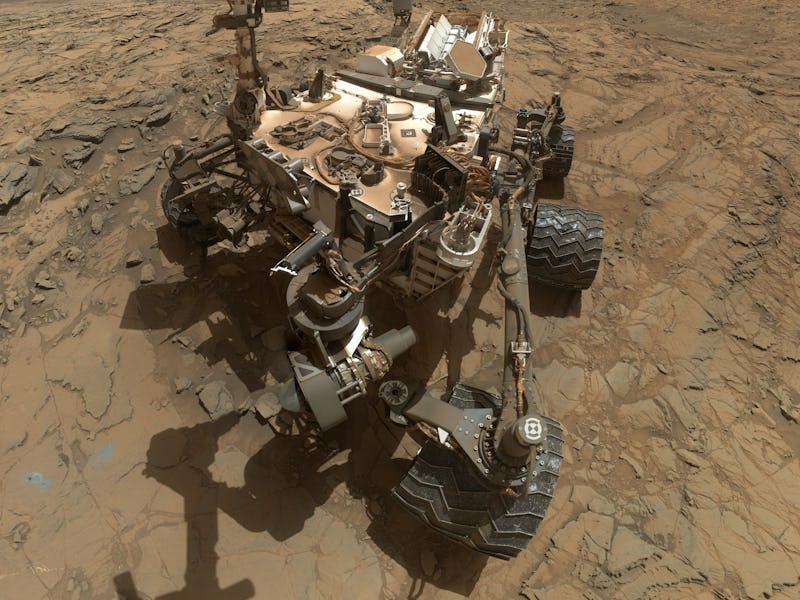On Mars, the NASA Curiosity rover begins a new era of exploration
The robot explorer will reach its destination by fall.

NASA's Curiosity rover has big summer plans: The car-sized robot is venturing across new terrain, searching for ancient Martian life.
Curiosity recently began a mile trek across Mars' Mount Sharp to reach a new area of the layered mountain that is rich in sulfates, a type of salt that forms around water as it evaporates. The rover is expected to reach its new destination and begin a new era of exploration by early fall.
The Curiosity rover first landed on Mars in August, 2012, starting off on the floor of the 96-mile-wide Gale Crater. Two years later, it began exploring Mount Sharp, the central peak in Mars' Gale Crater that reaches up to three miles above the valley floor.
The mountain itself is made up of layers of sediment that have built up over time, therefore this area contains clues as to how the Red Planet changed over time from possibly being a warm, wet and habitable world to the dry, desolate and dusty planet it is today.
This animation shows a proposed route for NASA's Curiosity rover, which is climbing lower Mount Sharp on Mars.
The rover has been slowly making its way up from the base of the mountain, and it is currently heading towards a sulfate-bearing unit of Mount Sharp. The presence of sulfate could provide new evidence of ancient bodies of water that may have once flowed across the Martian surface.
Since early 2019, Curiosity was investigating a clay-rich area at the bottom of the mountain to detect whether it was water that had lead to the formation of the clay and if it bears evidence of past microbial life.
Both of these areas share a common slope with a sandstone cap that is known as the Greenheugh Pediment. This pediment is believed to have formed after the water dried up from Gale Crater, and sand was transported over by the wind to eventually compile into a sandstone cap across its surface.
Curiosity ventured to the top of Greenheugh Pediment back in March and observed small bumps along the surface, which scientists believe requires water in order to form.
"We found some in the windblown sandstone on top of the pediment and some just below the pediment," Alexander Bryk, a doctoral student at the University of California, Berkeley who led the pediment detour, said in a statement. "At some point after the pediment formed, water seems to have returned, altering the rock as it flowed through it."
At the time, Curiosity's trek to the pediment was a risk that paid off. And for its ongoing journey, the rover will have to rely on its own driving skills to reach the sulfate-rich region of Mount Sharp.
Curiosity's top speeds range between 82 and 328 feet per hour.
The team of scientists and engineers behind the Curiosity mission will be sending commands to the rover on Mars with the majority of them working from home in order to follow social distancing guidelines. However, the rover also has automated driving abilities that enable Curiosity to find the safest route on its own.
"Curiosity can't drive entirely without humans in the loop," Matt Gildner, lead rover driver at JPL, said in a statement. "But it does have the ability to make simple decisions along the way to avoid large rocks or risky terrain. It stops if it doesn't have enough information to complete a drive on its own."
Although a team of engineers is already working on developing a more autonomous rovers for future exploration of Mars.
NASA previously sent two other rovers to Mars, Spirit, and Opportunity, which landed on the Red Planet in January, 2004. And soon, Curiosity will be joined by the Perseverance rover on Mars.
However, the two will unlikely cross paths as Perseverance will land on Jezero Crater, a 28-mile-wide crater that scientists believe was once filled with water.